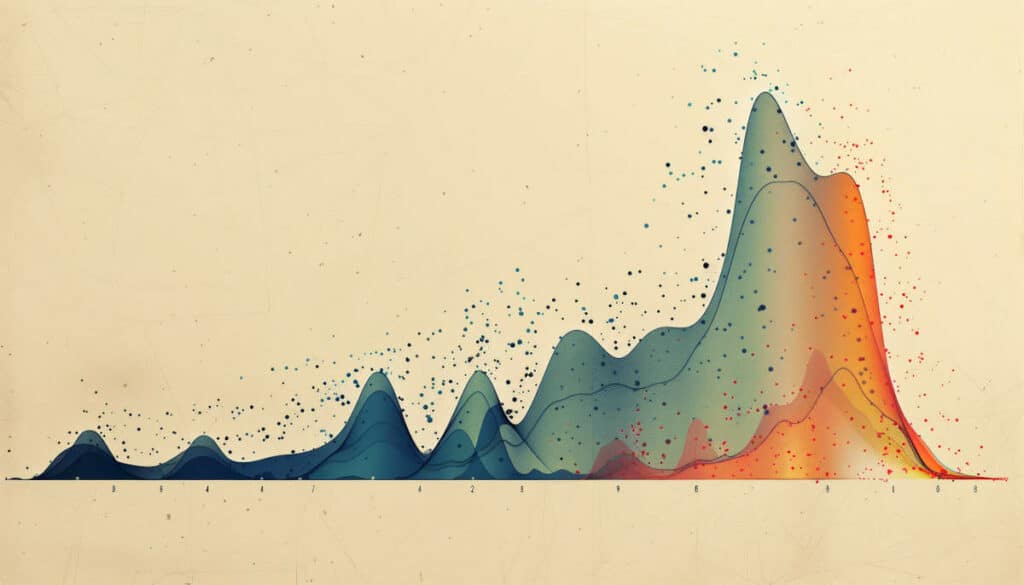What if everything was connected? Well, maybe not everything. But a large part of natural phenomena. This is at least what the power law reveals. This mathematical concept establishes dynamic relationships between variables that do not follow the same models. Discover this law in more detail.
What is the power law?
The power law (or exponent law) reveals the relationships between two variables, where one is a function of the other raised to some power.
Mathematically, this is expressed as follows:
y = ax ∧ b Where:
- y is the dependent variable,
- x is the independent variable,
- a is the coefficient that influences the relationship between these two variables,
- b is the exponent that determines how x affects y.
To help you better understand this power law, here is a concrete example:
The growth of a plant which evolves according to the amount of light it receives.
In this example:
- y is the height of the plant,
- x is the amount of light received each day,
- a is the coefficient that may influence the relationship between the plant’s height and the amount of light,
- b is the exponent that determines how the amount of light affects the plant’s height.
In this equation, the relationship between the plant’s height and the amount of light varies greatly depending on the exponent b.
- If b is greater than 1, it means that small increases in light will lead to significant increases in plant height,
- If b is between 0 and 1, it means that the plant’s height increases as it receives more light. However, each increase in light has less impact on its growth,
- If b is negative, this signifies an inverse relationship between light and plant height. Thus, the more light the plant receives, the slower its growth.

What are the different power laws?
There is not just one power law, but several. Here are the main ones:
- Zipf’s Law: it describes the distribution of word frequencies in a text, the size of cities in a region, individual incomes, etc. According to this law, the frequency of an element is inversely proportional to its rank,
- Pareto’s Law: this is the 80/20 rule, which stipulates that about 80% of effects come from 20% of causes. For example, in a company, 80% of revenues are generated by 20% of clients,
- Ohm’s Law: applicable to electricity, this law describes the relationship between voltage, current intensity, and resistance,
- Newton’s Law of Universal Gravitation: it describes the force of attraction between two masses,
- Gompertz Law of Growth: it is used to model the growth of biological populations or the evolution of diseases.
As these laws are notably varied, the power law applies to various fields.
What is the power law used for?
Whenever there is a need to describe nonlinear relationships between two variables, the power law can apply. It can be used to model phenomena in:
- Economics: economic growth models often use the power law with variables such as GDP, profits, company size, etc.,
- Biology: the power law establishes the relationship between the size of an organism and its basal metabolism,
- Transportation: transport networks are often modeled using power laws that describe the distribution of the number of roads in relation to the size of cities,
- Computer Science: the Internet is modeled based on the distribution of the number of links to web pages. This is referred to as a scale-free network.
Due to its omnipresence at all scales of society, the power law is a mathematical concept that is absolutely essential to master. Especially if you are looking to design machine learning models. That’s why it is essential to get trained. And why not with DataScientest!











